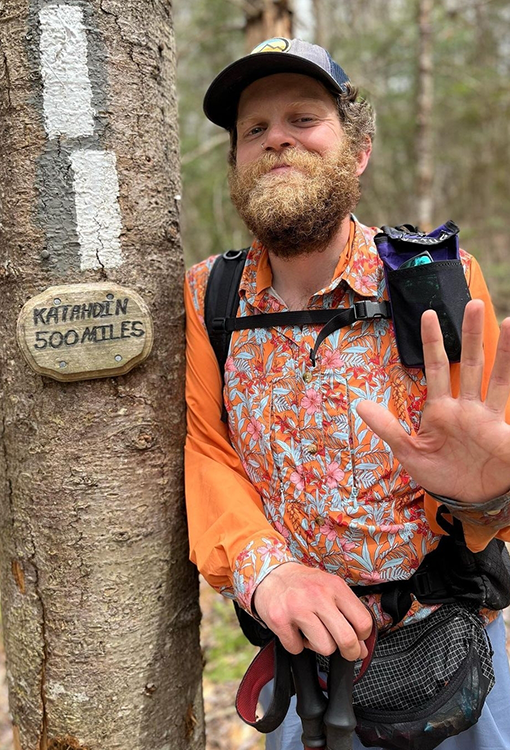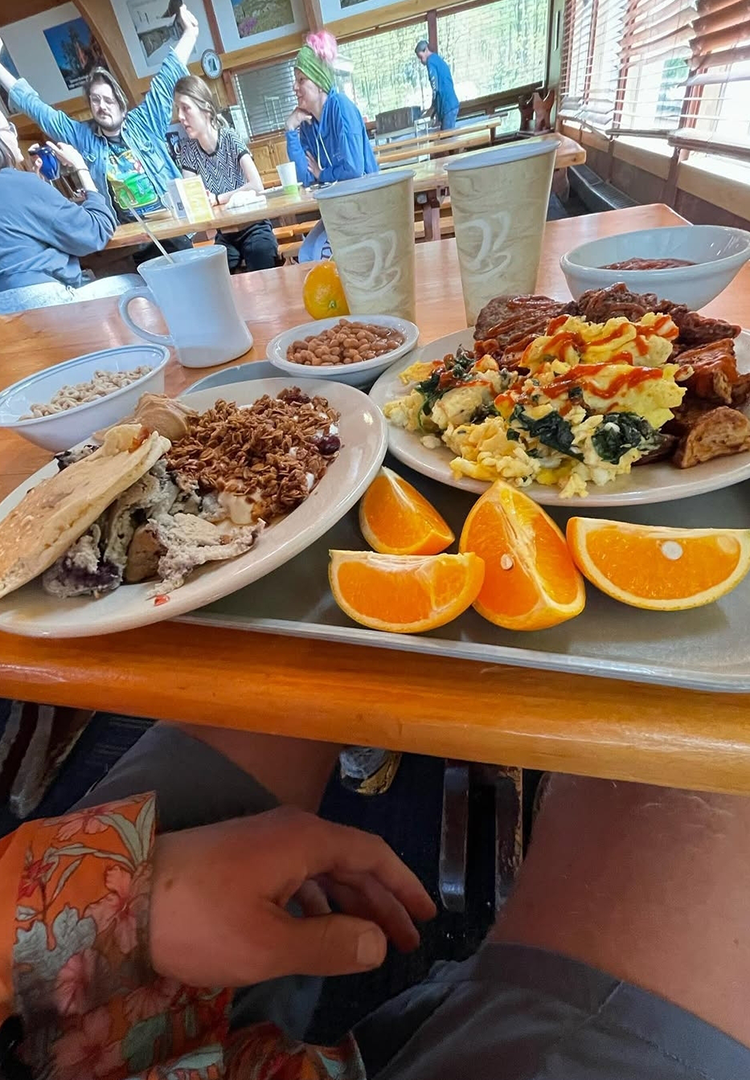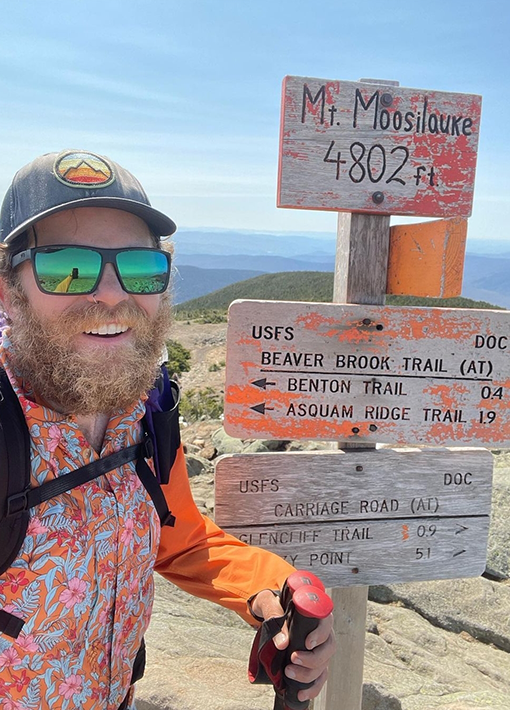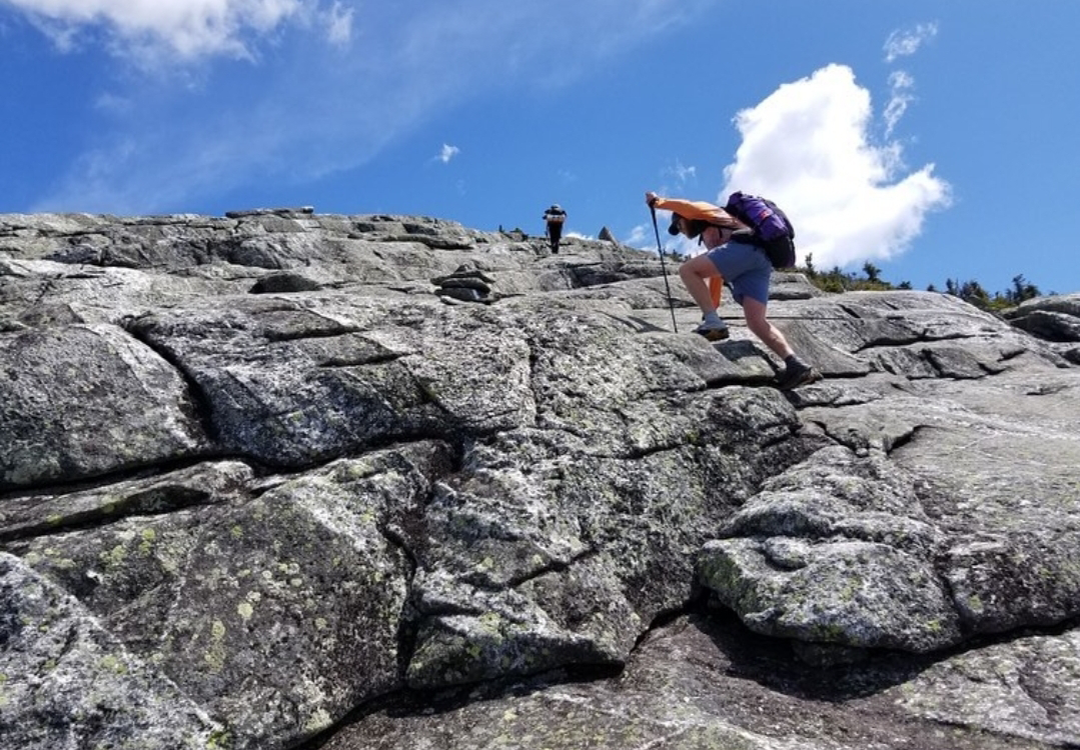
500 MILES ‘TIL THE END – PROF CARL
How to Thru-Hike the Appalachian Trail Part 3: Preparation
Two-time Appalachian Trail Thru-hiker and One-time Calendar Year Triple Crowner Carl Stanfield’s “How to Thru-hike the Appalachian Trail” continues with everything you need to consider while preparing for your thru-hike. Things like mental and physical prep, but also what to expect after trail, too. Part 1 of this series covered Food and Resupply, while Part 2 covered Weather, Wild-life, and Lodging.
Preparation
The most dangerous thing a person can encounter on trail is negativity. I know it probably sounds a bit silly when compared to all the other scary things that are out there, but in terms of what’s most likely to get a person off trail, it most commonly comes down to what’s going on in a person’s mind. The thing about a thru-hike is, the only reason that anyone is out there is because they want to be. If they stop wanting to be, they can just go home. So, the most important thing a person can do is prepare to want to be out there.
Mental Fortitude
One of the best ways to be mentally prepared is to have an actual idea of what to expect. It’s hard to predict what month 3 is going to feel like mentally or physically, sure, but in reality, a thru-hike is just a string of 3-6 day backpacking trips. If a person can make it on a 6 day backpacking trip and still want to go backpacking again, they can thru-hike. As long as budget and time aren’t too much of an issue, a person can do their 3-6 days, recover over the course of a night or two in town, and then hope back on trail, fresh and ready for the next stretch. One of my very favorite parts of thru-hiking is hanging out in town. I love it, and I always look forward to it. This means that every 3-6 days, I have something I’m looking forward to. It helps drive me and keep me on trail as much as anything.
Why
Before my first thru-hike, some of the best advice I got was to write down my “why.” A person’s “why” will come into question consistently over the course of a thru hike. It’ll be one of the 2-3 questions almost anybody encountered will ask a thru-hiker. Therefore it’s important to have this solid and ready to share. It’s also important because it’s the thing that will keep a person going when times are tough, to look back and remember the reason they’re out there.
I’ll be happy to share my “why” from my first hike:
On December 10, 2017, everything in my life all came to a halt at the same time. That morning, I moved out of my house and left my job. I drove to my girlfriend’s house in Seattle, a city I had saved up to move to. That afternoon, the job I thought I had secured fell through, and that evening, the girlfriend broke up with me. Even though I didn’t see it coming and hadn’t prepared for it at all, 20 minutes into the 4 hour conversation, an idea just popped into my head: to hell with it. I’m hiking the Appalachian Trail.
I wanted to use the experience to craft the next phase in my life: this was my transition, my time to prove myself to myself. I wanted to test my abilities, both physically and interpersonally. I wanted to do something hard and succeed, and have something nobody could take from me. I wanted a most valuable possession in a successful hike.
Prepare to Suffer
A successful thru-hike includes a lot of suffering. A thru-hiker will be some combination of wet, hurt, tired, hungry, cranky, sleepy, and sore every single day of their hike. In my opinion, this is one of the reasons thru-hikes are so enjoyable. Experiencing these things regularly lowers a person’s comfort threshold, making the most mundane experience feel incredibly lavish. When you’re used to stinking and having sore legs all the time, a hot bath in a cheap motel is the height of luxury. When your inflatable pad’s had a leak and you’ve been sleeping on the hard cold ground for a couple days, a springy mattress is heaven. Experiencing prolonged suffering leads to the most rewarding experiences, but that can only happen if a person is willing to pay the suffering.
Shakedown Hike
One of the best ways to get an idea for what to expect on trail is to do a shakedown hike, anything from 3-6 days. It’s shocking how many people step onto the AT having never so much as set up their tent before. Some of those people make it, but I think even more would make it (and maybe fewer would even attempt) if they’d had a trial run first. It’s much better to try out gear when you aren’t as committed to it as you are in a thru-hike. It’s manageable to replace gear on trail, but it’s much simpler and often cheaper to do it ahead of time if need be. It’s also good mental fortitude training, spending some time on trail and maybe even experiencing some of those discomforts for the first time.
Physical Training
I’ll admit: I have never trained very much for a thru-hike. I felt out of shape both times I started the AT. Everything I read said that thru-hikers mostly all end up in the same shape after about a month no matter how they started: and I found this to be true. I do think I would have felt even better starting out with some regular cardio and stretching, but both hikes I’ve started out in sub standard shape (about 20-30 pounds over my ideal weight) and both times I’ve gotten into shape while on trail. Call it youthful resilience if you want, but I think physical shape actually isn’t too important of a factor when starting the trail. If a person’s mind is set enough, they’ll stay out long enough to get in proper hiking shape.
Life After Trail
One of the biggest questions every hiker will get while on trail is: “What are you going to do after?” Some people have an answer. Some don’t. Personally, one of the most exciting parts of my first thru-hike was not having that answer for people. I loved the thrill of being open to any and all possibilities that came my way while I was on trail. I also had enough in savings that I didn’t need to have an immediate plan. I always wanted to figure things out while I was on the trail, and I was fortunate enough to be in a position to do so. It’s definitely important to have in mind, but it shouldn’t be too much of a stressor while on trail. If it feels like it’s going to be, try to sort out as much as possible ahead of time. Whatever a person’s planning is, I think it’s ideal to have at least 2-4 weeks after the hike is done to just relax. A buffer phase is important for preparing to reintegrate to life after the trail.
In addition to having logistics in line, it’s important to prepare for a bit of physical rehab. When I finished my first thru, I needed to grab the rails to descend the stairs for months. I needed to stretch more than I ever had in my life, and I was voraciously hungry all the time. I put back on most of the weight I’d spent the summer losing in a matter of weeks. And very quickly, I missed my life of freedom. Post Trail Depression is a common term used to describe the phenomenon most hikers experience after a successful thru hike. It can be really hard to want to do anything else after working towards a single goal for so long. It feels great to achieve it, but anything after can and often does feel empty. It’s important to have another goal or two already lined up and ready to go to avoid falling into a bit of a post hike funk.
For more on Post Trail Depression and how to handle it, click here.
A successful thru-hike includes a lot of suffering. A thru-hiker will be some combination of wet, hurt, tired, hungry, cranky, sleepy, and sore every single day of their hike. In my opinion, this is one of the reasons thru-hikes are so enjoyable.





Beautifully written, my son!